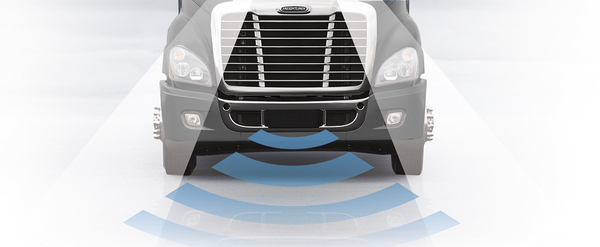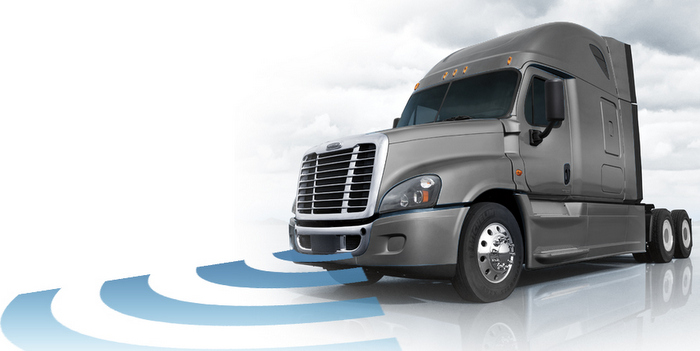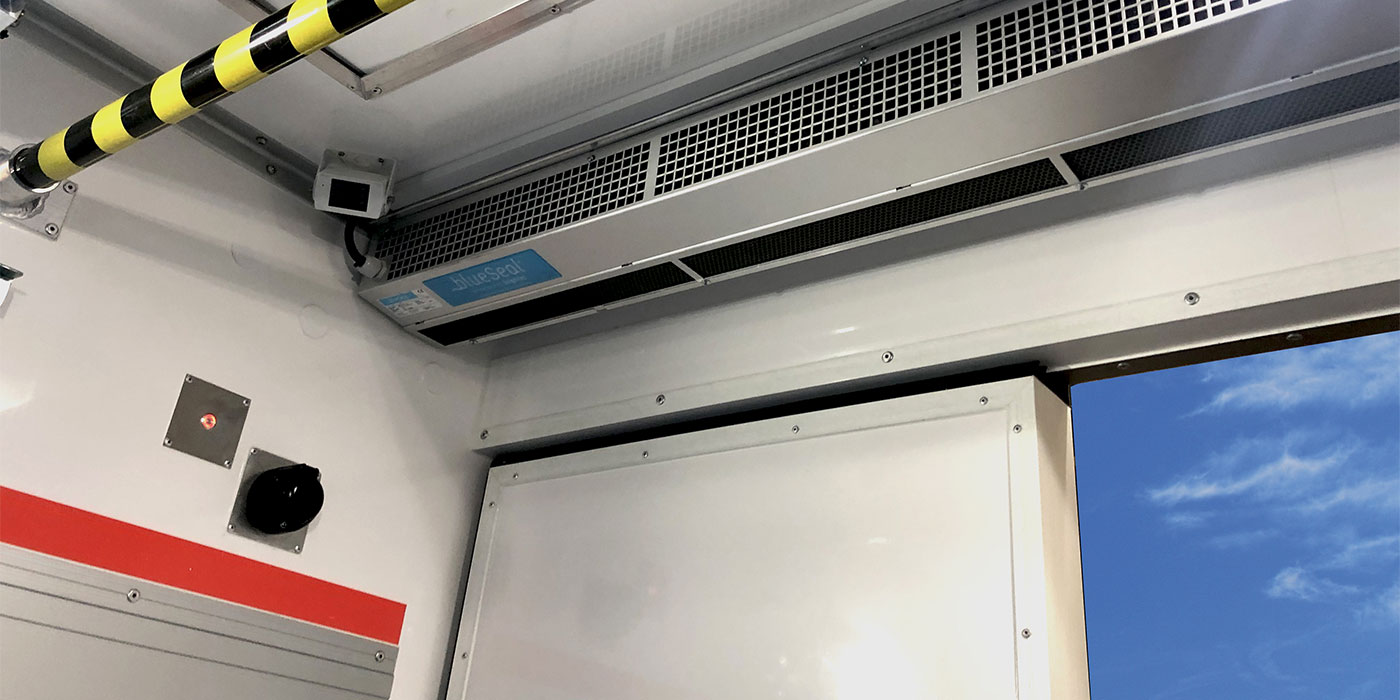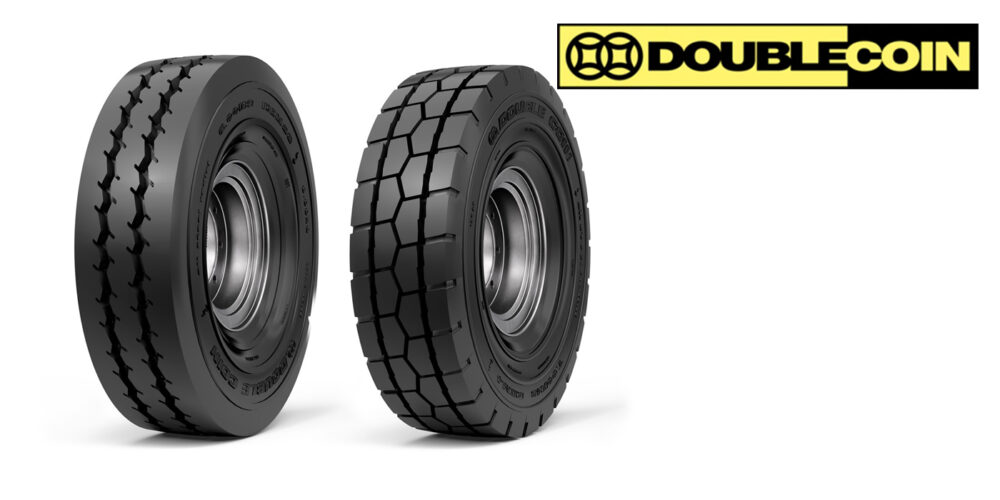“If you look at some of the things that have been happening in our industry, safety is becoming more and more of an issue to make sure that drivers are safe, the public is safe and equipment is safe,” Brad Williamson, manager, engine and component marketing for Daimler Trucks North America, said to a room full of journalists in Miami as Daimler Trucks North America took its first step into the business of driver safety systems with the introduction Detroit Assurance, its proprietary suite of safety systems. “If we can mitigate a collision and [reduce accident] severity, we could save you a good chunk of money. It goes back to the Real Cost of Ownership—one of those pillars is safety.”
Don’t miss our Detroit Assurance demonstration video
Detroit Assurance builds on the safe drive innovations pioneered by parent company Daimler. Most recently, Daimler showcased the Mercedes-Benz Future Truck 2025, which was equipped with an advanced vehicle communication system featuring radar, sensor and camera technologies that enhance driver performance and safety.
Available for the Freightliner Cascadia Evolution and Cascadia equipped with Detroit engines, the Detroit Assurance safety suite includes driver-friendly controls, and is seamlessly integrated into the truck’s dashboard, engine and transmission electronics, resulting in smoother and more accurate transitions. Detroit Assurance systems are based on the truck’s position and movement and use cab-mounted radar and cameras to warn the driver or, if necessary, slow the truck down automatically.

Detroit Assurance includes:
• A base radar system that features collision mitigation as well as adaptive cruise control. It uses active braking assist (ABA) that is always on and applies the brakes to mitigate collisions, while adaptive cruise maintains a safe following distance.
• An optional camera system with lane departure warning. It uses audio and visual indicators to notify a driver they have unintentionally departed their lane.
The always on ABA radar system detects objects, calculates speed and determines if a warning or action is necessary. Based on the position and speed of the truck and other vehicles, ABA warns the driver and decelerates automatically to lessen the severity of collisions that might otherwise be unavoidable. It’s a three step process: The first is an audible alert that mutes the radio and activates a buzzer while also providing a visual alert on the dash. If the driver fails to react, the ABA system will partially brake to physically warn the driver to respond. The final step, if the driver does not respond, is that the ABA will take command using the transmission, engine brake and service brake to slow the truck safely. (On manual transmission trucks, only the service brakes are used to slow the truck.)
The keyword in ABA is “assist.” As truck equipment trends move more toward the autonomous future hinted at by the aforementioned Future Truck, none of the safety technology showcased by Detroit Assurance seeks to take the driver out of the equation. Williamson explains:
“Your base expectation is that the driver is engaged and in control every step of the way. It’s safety assistance, it’s not doing it for you—it will at some point if the driver doesn’t act—but the system is designed to get the driver’s attention to react. We don’t want to take control of the vehicle, we want the driver to react.”
That same theme continues in the Adaptive Cruise Control (ACC) that is paired with the ABA in the Detroit Assurance collision mitigation offering. ACC automatically adjusts the truck’s cruising speed to maintain a safe following distance from other vehicles in its path, allowing the truck to remain in cruise control longer. While in cruise control mode, the system sets the cruise speed to ensure a safe following distance to the vehicle ahead. The factory setting is 3.5 seconds behind the forward vehicle. As the truck approaches the slower vehicle from behind, the truck will slow to maintain a speed that ensures that 3.5 second safe distance. Once the vehicle clears, the truck will resume the faster cruise speed.
If a vehicle abruptly enters the lane, ACC will attempt to adjust to the situation. If necessary, the ABA system will be employed—highlighting the importance of integration and precision that Detroit stressed.
Detroit Assurance’s Lane Departure Warning (LDW) is an optional independent system that is only available in addition to the radar system. When the truck exceeds 37 MPH, the system uses a camera to track the truck’s position and provide warnings if the truck veers out of its lane. The forward-facing camera is specially built to detect reflective paint and raised reflectors in road lines. However, if lines are faint, or covered by snow or dirt, the LDW system may not activate. For situations, such as highway construction or winding roads, the system can be disabled with a switch on the instrument panel — for 15 minutes, then automatically re-engages at 48 MPH. The LDW camera never faces or records the driver.
Detroit Assurance will be available on model year 2016 Freightliner Cascadia and Cascadia Evolution with Detroit engines and DT12 and Eaton manual transmissions.














